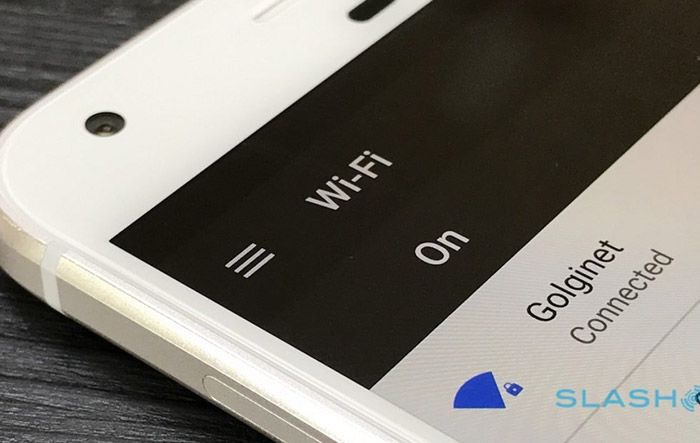What Is Wi-Fi 7 And What Are Its Features?
Although Wi-Fi 6E Technology Has Not Yet Been Widely Used, The Field Of Wireless Communications Is Still Evolving Rapidly, And The Development Of Wi-Fi 7 Is Now Underway.
Many users do not pay much attention to their home network equipment and upgrade it less. For example, WiFi 6 routers entered the market in 2019; But most users still do not use this modem. The acceptance rate of routers equipped with Wi-Fi 6 and 6E is not high. Still, the field of wireless communications is preparing to introduce WiFi 7 as the next generation of wireless networks.
According to Android Authority, the future standard of WiFi 7 is not a significant leap compared to the previous generation of this technology. WiFi 7 operates in the 2.4, 5, and 6 GHz frequency bands.
However, this technology seems to have improved in terms of stability and security compared to the previous generation of WiFi. In the following, we will review the features of the next generation of WiFi.
What is WiFi 7?

WiFi 7 is the technology we are looking forward to from the next generation of wireless networks. Currently, the name of this network is technically IEEE 802.11be, which indicates that it will be a modification to the original 802.11 WiFi standard. This standard is also known as EHT and focuses on gradually improving many features added to previous standards, including WiFi 6.
WiFi 7 focuses more on gradually improving the capabilities added to the previous standard, WiFi 6.
For example, let’s consider “orthogonal frequency division multiple access” or OFDMA. This feature is introduced in WiFi 6 and allows routers to manage more connected devices and efficiently use the available range.
WiFA 7 aims to increase productivity one step further with OFDMA coordination. This technique will transmit data, allowing multiple wireless access points (APs) to communicate and better performance on more extensive wireless networks.
WiFi 7, like 5G, has been developed to reduce latency in areas such as live streaming and PC gaming. The delay here only refers to when a signal is sent from your router or access point to the device, and the response is returned to the source.
If you have ever had a long pause in video calling, you are probably familiar with this delay rate.
The delay will be more severe as you move away from the signal source.
However, network congestion can also lead to increased data transfer latency.
The next generation of WiFi and improving the connection point of routers allows devices to use multiple frequency bands and channels to transmit and receive data simultaneously to reduce latency.
This feature is called multi-link operation and will help create more stability when your network traffic is disrupted due to interference from external signals or even congestion of nearby devices.
Although increasing the power or speed is not the main focus of WiFi 7, this technology achieves this goal thanks to the support of wider channels. In other words, channels are subbands in the central WiFi frequency. For example, the 5 GHz band is divided into 45 smaller channels; the width of these separate channels varies from 20 to 80 MHz.
The new 320 MHz Wi-Fi 7 channels are theoretically faster than the Wi-Fi 6 and 160 Hz. Although not all devices support these broadband channels, this feature is suitable for high-bandwidth applications.
Finally, WiFi 7 also increases the number of spatial streams to 16. Intel estimates that the new standard could theoretically reach 46 Gbps when combined with broader channel support. This figure is more than five times higher than the record speed of WiFi 6 (about 9 Gbps).
Why do we need WiFi 7?

Of course, many of us still use Wi-Fi 6-limited devices and routers that are now more than a decade old. Although Wi-Fi 6 and Wi-Fi 6E are relatively new, they are not yet widely used in various devices, and we only see support for these standards on some flagship phones.
Nevertheless, the question is, why is the wireless industry still looking for the next generation of this technology? The simple answer is that today we are witnessing very advanced innovations in various fields. The improvements in the next generation of WiFi can help us make better use of these advances in the years to come.
Although video conferencing and the Internet of Things ( IoT ) are relatively new today, the popularity of these domains is likely to increase in the coming years.
It is especially true in the corporate sector, Where IoT-related industrial devices such as sensors and surveillance equipment can quickly test the limitations of existing WiFi standards.
However, many home users today also use products such as smart speakers, smart bulbs, plugs, and thousands of other devices. In addition, many of today’s home appliances, such as coffee makers, can connect to the Internet.
WiFi 7, with features such as increased capacity and less latency, and improved capabilities related to signal interference management, can be an excellent platform to increase various IoT devices’ productivity. Of course, regular home users may not benefit much from upgrading to Wi-Fi 7. Still, this technology will help users who enjoy virtual reality, augmented reality, and online games.
When will WiFi 7 be available?

It is worth mentioning that WiFi 7 at this stage is far from its official specifications. The Institute of Electrical and Electronics Engineering (IEEE) has not even used the name WiFi 7 for this generation of technology.
So it is not surprising that we have a long way to go with introducing devices equipped with WiFi 7. Work on the protocol will complete between 2023 and 2024, and even after that, you may have to wait another year or two for mainstream approval.
In addition, even though a whole year has passed since the finalization of Wi-Fi 6E, most countries have not yet received permission for the new 6 GHz spectrum for public use.
According to the list compiled by the WiFi Alliance, large markets such as the United States, the United Kingdom, and the European Union have removed the license from this range and allowed it to be used in domestic applications.
However, there are still notable exceptions.
Australia and Japan, for example, are still investigating; Other significant markets, such as India, have not even responded to industry demand for 6E Wi-Fi.
All in all, WiFi 7 can only enter the market seriously if we see more acceptance of current standards. Of course, given the slow release of Wi-Fi 6E, it is likely that the next generation of this technology will be a few years away from reaching our homes.
